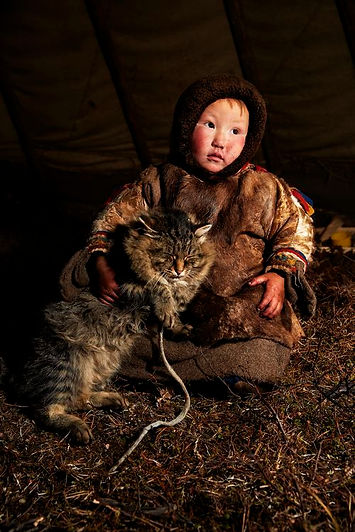
The Siberian is an ancient natural breed from the Siberian forests of Russia. The earliest accounts of them go back to 1000 AD, in fact they may be the ancestor of all long haired cats. They are mentioned in many Russian fairy tales and children's stories, this is one of the reasons I love to name my Siberians after Fairy Tales. The extreme conditions of the forest created this breed to survive one of the coldest places in the world. They have a thick triple coat to keep them warm and dry. Their paw pads are tufted to prevent frost bite. Their thick fluffy tails are perfect for wrapping around and protect their face from frost bite.
They remained unchanged and natural until around the 1700's. At that point Russia began trade and cats from different parts of the world began breeding with the Siberians. Near the Neva River, color pointed cats began breeding with the native Siberians. This is how the color pointed Siberians known as Neva Masquerade came to be. They were named from the Neva river from where they originated and Masquerade from the mask of color on their face. Although the color has been accepted into Siberian lines, some breeders as myself prefer to breed the traditional colors and lines free of the color point gene. Siberians remained in Russia until the end of the Cold War. In June of 1990 the first three Siberians (Ofelia, Naina & Kaliostro)made their way to the U.S. It took the breed 6 years to be accepted for Champion status in TICA. But unable to be registered in CFA until February 2000, and finally elligable for Champion status in 2006.
Although the breed is still relatively unknown by most, the breed is now beginning to gain some popularity among allergy sufferers. For an ancient breed, their many things are still not known about the Siberian. It is vitally important to fund genetic research to answer these questions. What genes are responsible for genetic disorders like HCM and PKD in Siberians? Answering these questions would help ensure the continued health of the breed.

Two of the Siberians first imported to the U.S
.png)





